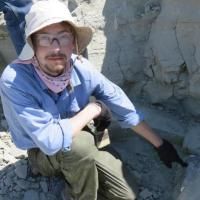Development and Assessment of Fully Automated and Globally Transitive Geometric Morphometric Methods, With Application to a Biological Comparative Dataset With High Interspecific Variation.
Date
2018-04
Journal Title
Journal ISSN
Volume Title
Repository Usage Stats
views
downloads
Citation Stats
Abstract
Automated geometric morphometric methods are promising tools for shape analysis in comparative biology, improving researchers' abilities to quantify variation extensively (by permitting more specimens to be analyzed) and intensively (by characterizing shapes with greater fidelity). Although use of these methods has increased, published automated methods have some notable limitations: pairwise correspondences are frequently inaccurate and pairwise mappings are not globally consistent (i.e., they lack transitivity across the full sample). Here, we reassess the accuracy of published automated methods-cPDist (Boyer et al. Proc Nat Acad Sci 108 () 18221-18226) and auto3Dgm (Boyer et al.: Anat Rec 298 () 249-276)-and evaluate several modifications to these methods. We show that a substantial percentage of alignments and pairwise maps between specimens of dissimilar geometries were inaccurate in the study of Boyer et al. (Proc Nat Acad Sci 108 () 18221-18226), despite a taxonomically partitioned variance structure of continuous Procrustes distances. We show these inaccuracies are remedied using a globally informed methodology within a collection of shapes, rather than relying on pairwise comparisons (c.f. Boyer et al.: Anat Rec 298 () 249-276). Unfortunately, while global information generally enhances maps between dissimilar objects, it can degrade the quality of correspondences between similar objects due to the accumulation of numerical error. We explore a number of approaches to mitigate this degradation, quantify their performance, and compare the generated pairwise maps (and the shape space characterized by these maps) to a "ground truth" obtained from landmarks manually collected by geometric morphometricians. Novel methods both improve the quality of the pairwise correspondences relative to cPDist and achieve a taxonomic distinctiveness comparable to auto3Dgm. Anat Rec, 301:636-658, 2018. © 2017 Wiley Periodicals, Inc.
Type
Department
Description
Provenance
Citation
Permalink
Published Version (Please cite this version)
Publication Info
Gao, Tingran, Gabriel S Yapuncich, Ingrid Daubechies, Sayan Mukherjee and Doug M Boyer (2018). Development and Assessment of Fully Automated and Globally Transitive Geometric Morphometric Methods, With Application to a Biological Comparative Dataset With High Interspecific Variation. Anatomical record (Hoboken, N.J. : 2007), 301(4). pp. 636–658. 10.1002/ar.23700 Retrieved from https://hdl.handle.net/10161/18074.
This is constructed from limited available data and may be imprecise. To cite this article, please review & use the official citation provided by the journal.
Collections
Scholars@Duke

Gabriel Yapuncich
I hail from the great mountain states of Montana (the state of my birth) and Wyoming (the state of my childhood). I have a bachelor's degree in English literature from the University of Wisconsin and a bachelor's degree in the evolutionary biology from Columbia University. I completed my PhD in evolutionary anthropology at Duke University in March 2017, working with Dr. Doug M. Boyer. I have taught gross and microanatomy to Duke University School of Medicine students since 2018. In 2021, I joined the DUSOM MD program as an Assistant Professor of the Practice of Medical Education and Director of Accreditation and Continuous Quality Improvement.

Ingrid Daubechies

Douglas Martin Boyer
Unless otherwise indicated, scholarly articles published by Duke faculty members are made available here with a CC-BY-NC (Creative Commons Attribution Non-Commercial) license, as enabled by the Duke Open Access Policy. If you wish to use the materials in ways not already permitted under CC-BY-NC, please consult the copyright owner. Other materials are made available here through the author’s grant of a non-exclusive license to make their work openly accessible.
